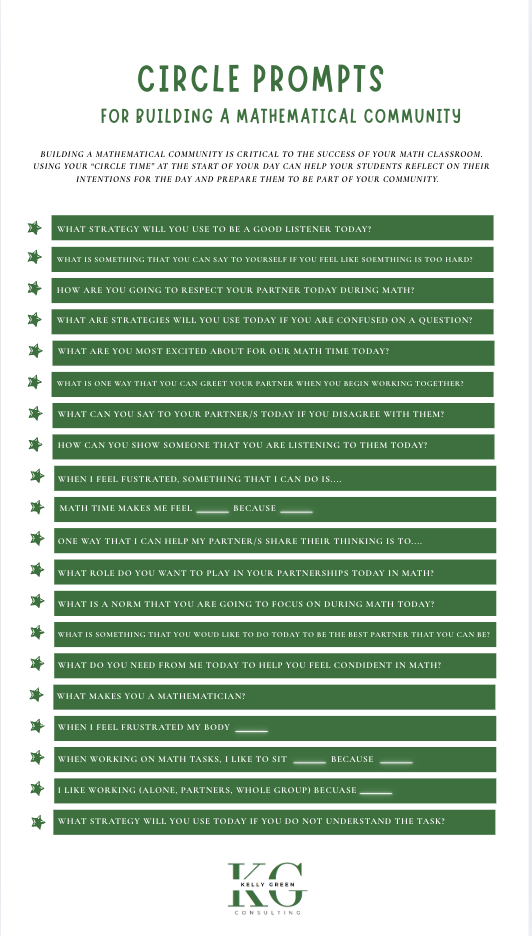Circle Prompts to Help Build a Mathematical Community
Circle time has become an essential part of many elementary classrooms. It gives students a calm, consistent space to prepare for the day and build classroom connections. While we often associate circle time with social-emotional learning—like sharing weekend stories or favorite foods—it can also be a powerful tool for supporting mathematics.
According to Mary Joseph in Benefits of Circle Time in Older Elementary School Classrooms (Education World), circle time promotes social skills, boosts motivation, enhances cognitive development, strengthens motor skills, and supports routine building. These same benefits can directly support a thriving mathematics classroom—especially one grounded in student-centered practices.
In a student-centered math environment, learners are expected to listen actively, explain their thinking, ask questions, and collaborate on complex tasks. They must also learn how to use mathematical tools appropriately, embrace mistakes, and persevere through challenges. These are not innate skills—they must be explicitly taught, practiced, and reinforced, regardless of students’ age or background.
One of the best times to build these habits is during the math block itself, where students can apply them in real time. But once those habits are introduced and practiced, circle time can serve as a space to reflect, preview, and strengthen them—without interrupting instructional flow.
Instead of reserving circle time only for community-building conversations, teachers can also use it to prepare students for the mathematical mindset they'll need during the day. It’s an opportunity to surface strategies, reflect on challenges, and normalize the struggle that can come with meaningful learning. These short, intentional prompts build classroom trust and mathematical confidence.
Imagine you’re about to begin a particularly challenging math task. Rather than wait until the middle of your lesson to address potential hurdles, you use circle time to front-load that conversation. You might start with a simple question like:
“What strategies can you use if you’re feeling stuck during math today?”
Now, students have the chance to hear ideas from their peers, mentally prepare for potential struggles, and enter math class with tools in their back pockets. During the lesson, instead of pausing for a group discussion, you can simply say:
“Remember what we talked about this morning—choose one of those strategies now.”
This saves time, builds independence, and reinforces a sense of ownership over their learning.
If you’re interested in having a collection of ready-to-use prompts that support both mathematical and community development, download Circle Prompts for Building a Mathematical Community at the Kelly Green Consulting website under Resources → Teacher.
Let’s use the first few minutes of each day not just to build connection—but to build confident, collaborative mathematicians.




